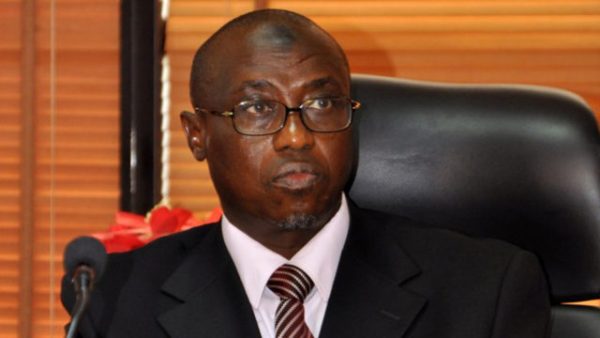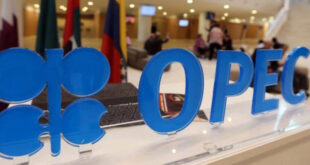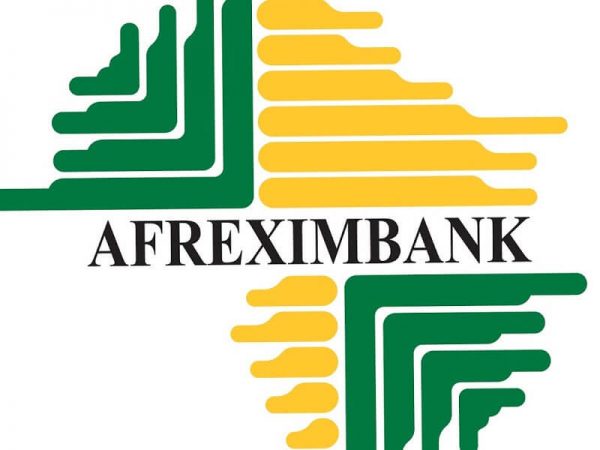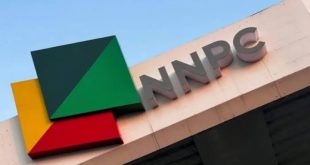
The Nigerian National Petroleum Corporation has said it seeks to increase the nation’s crude oil reserves to 40 billion barrels and production capacity to four million barrels per day by 2025.
The Federal Government in 2010 set the target of 40 billion barrels of crude oil reserves and production of four million barrels per day at 2020.
The Group Managing Director, NNPC, Dr Maikanti Baru, on Thursday last week, gave the indication that the corporation was seeking to attract necessary funding from the capital market for the development of the nation’s oil and gas resources.
In his address on the state of the industry, titled ‘Moving Nigeria towards energy self-sufficiency,’ at the Society of Petroleum Engineers’ Oloibiri Lecture Series and Energy Forum 2019, Baru said, “There is increasing global competition on Nigerian crude oil due to the rise of new production centres across the globe particularly in Africa and Argentina. These portend a new dimension for the Nigerian oil and gas industry.

“Nigeria, therefore, needs to unlock new barrels as quickly as possible to stay relevant in the new emerging world. Without adequate funding, we cannot meet the targets.”
Baru stated that evolving new funding mechanisms for the Joint Venture operations was part of the focus of the reforms undertaken by the government to eliminate the often difficult cash call regime, enhance the efficiency of the management of oil and gas resources and guarantee growth.
He observed that to encourage the existing players in the industry, particularly the traditional JV partners, “we undertook to settle all outstanding cash call arrears amounting to a negotiated sum of a little over $5bn.
“This has restored confidence in the Nigeria oil and gas industry. We have signed third-party financing deals with several international and local banks on new oil and gas developments worth over $3bn despite the depression in 2016/201 7. This demonstrates the faith in our industry and the potential we can unlock.”
He further stated that the oil firm was on the move to attract funding from the capital market.
“For our IOC partners, we would continue to leverage the strong credit rating of partners, identify key quick-win projects that are easy to mature with strong cash flow projections and attract the necessary funding from the capital market,” Baru said.
He added, “These alternative financing approaches to fund NNPC’s JV obligations have helped to renew investors’ confidence and stimulate further foreign direct investments. In particular, this has deepened local banks’ participation in financing the upstream sector as the financing are syndicated from local banks and international lenders.”
The GMD said the country’s petroleum product demand was expected to grow from 13.2 million metric tonnes in 2015, 15.1 million metric tonnes in 2020 and 17.3 million metric tonnes by 2025, while the population growth corresponding to the demand was 182 million in 2015, projected to be 207 million in 2020 and 234 million in 2025.
“The average population growth rate is three per cent per annum,” Baru stated.
He noted that Nigeria needed a refining capacity of 1.52 million barrels per day of crude oil in order to meet its Premium Motor Spirit requirement by 2025.
According to him, this capacity requirement includes Dangote’s 650,000 barrels per day refinery and NNPC’s current nameplate capacity of 445,000 barrels per day for its three refineries in Warri, Kaduna and Port Harcourt.
He said, “This leaves a shortfall of 20 million litres which is equivalent to 427,000 bpsd. In order to address this shortfall in PMS demand, NNPC is adding 215,000 bpsd of refining capacity through private- sector driven collocation at our existing facilities in Port Harcourt Refining Company (100,000 bpsd) and Warri Refining and Petrochemicals Company (115,000 bpsd).”
On measures put in place to ensure full energy sufficiency for Nigeria, Baru stated that NNPC was focusing on developing the nation’s gas resources.
He said the seven critical gas development projects targeted to deliver about three billion standard cubic feet of gas per day resources to the gas market by 2020 were at different stages of development in conjunction with the NNPC joint venture partners.
Baru said “The Assa North-Ohaji South Gas Development Project is ahead of the other projects. We have completed the Front End Engineering Design for facilities and pipelines for ANOH and have taken the Final Investment Decision for the project in December 2018 after lingering for many years.”
The GMD also noted that there had been an emerging class of new producers within the oil and gas Industry who were primarily local independents with a non- diversified portfolio and lean balance sheet or required track record to raise substantial funds.
“They have become important because approximately 15 per cent of both crude oil and gas reserves and national production lie in their hands. They also require substantial capital for growth. The Nigerian oil and gas landscape is fast changing from IOC-dominated to a much more diversified cocktail of influences involving locals, independents and the national oil company (NNPC),” he stated.
He added that it was quite an exciting time ahead for the Nigeria oil and gas industry, as the industry was funding both development and infrastructure through alternative means.
 MMS PLUS NG – Maritime, Aviation, Business, Oil and Gas News Online Newspaper with coverage in Maritime, Oil and Gas, Aviation, Power and Energy as well as Financial News
MMS PLUS NG – Maritime, Aviation, Business, Oil and Gas News Online Newspaper with coverage in Maritime, Oil and Gas, Aviation, Power and Energy as well as Financial News








